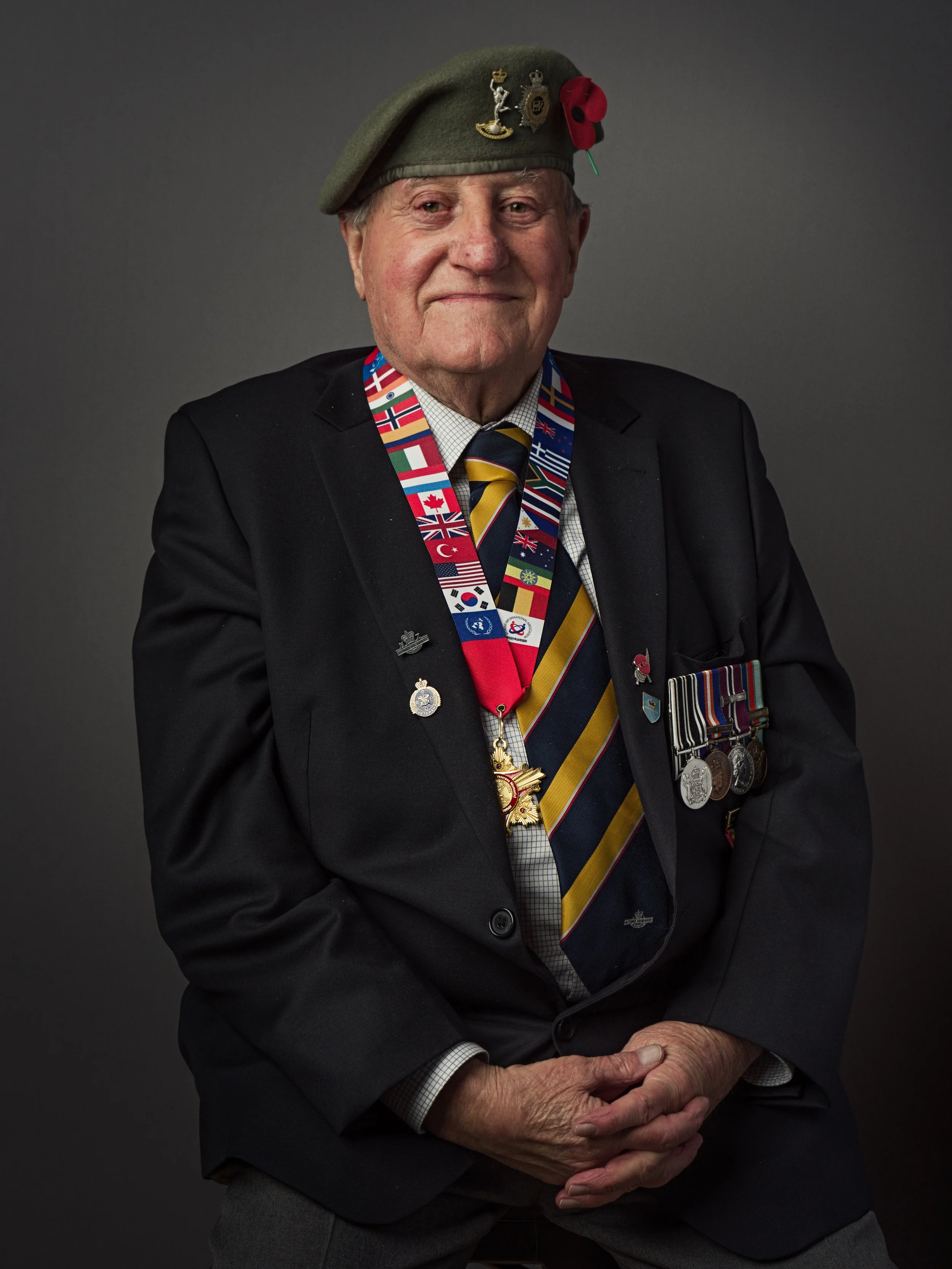I've always wanted to photograph our vets around ANZAC day, but generally I leave it too late to organise.
This year I approached several RSAs around January but heard nothing back. I gently persisted in my requests, and received a reply at the last minute stating that if I was prepared to shoot immediately after the dawn ceremony, I could set up my portable studio in a nearby hall.
Why was I so keen to photograph our vets this year? Because many are at an age where there would be few additional opportunities. They also make great subjects. I gave no direction on how to pose, but they all projected a dignified charisma that the camera loved. Despite my father and brother serving in the US and NZ Navies respectively, I'm as far as you can get from a military person as possible.
Technically, these photos were very simple - I placed large octobox to my left angled down 45 degrees. I erected my collapsible backdrop in a corner and provided a stool for the subjects. So I wasn't after a technical challenge. But I wanted to mix up my portfolio. I wanted to the opportunity to meet people who had lived rich and fulfilling lives and who had interesting stories to tell. These guys are characters
Personal projects keep me fresh and engaged. I loved this experience. I'm looking for another project to sink my teeth into. If you have any ideas, get in touch









